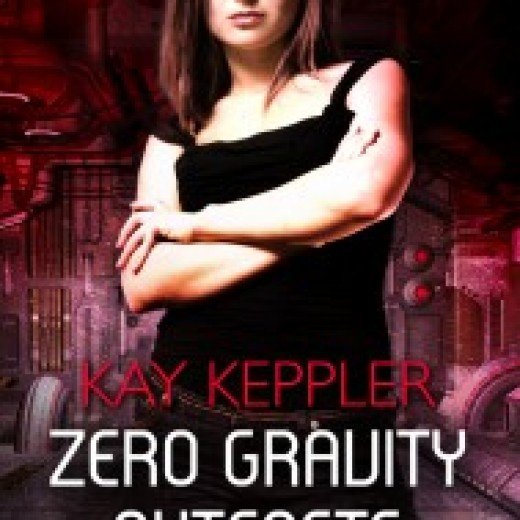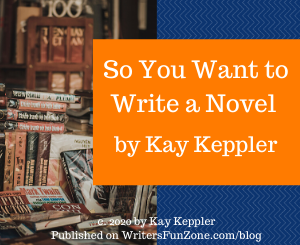Revealing Backstory through Nonverbal Communication by Kay Keppler
 Let’s welcome back monthly columnist, editor, and novelist, Kay Keppler, as she shares with us “Revealing Backstory through Nonverbal Communication.” Enjoy!
Let’s welcome back monthly columnist, editor, and novelist, Kay Keppler, as she shares with us “Revealing Backstory through Nonverbal Communication.” Enjoy!
***
Getting backstory right is difficult. Authors want readers to understand what made their characters into the people they are, but the usual backstory techniques—info dumps, prologues, and flashbacks—can slow the pace or even pull readers out of the story altogether.
Worse, readers can feel manipulated by authorial techniques. Characters’ conversations (“As you know, Bob, when we were children…”) are painfully obvious. Characters’ interior self-examination or a narrator’s overview are often boring. The appearance of long-lost letters or diaries with critical explanations are too convenient. Readers know a lazy storyteller when they see one, and they’ll put your book down if they come across those tricks.
Try Nonverbal Communication
One way to sidestep these pitfalls is to show characters communicating nonverbally. Gestures, expressions, and posture convey information and reveal emotions. Nonverbal communication is authentic because it’s based on learned, repeated, or automatic responses developed from past experiences. It offers immediate information to the reader that brings the past into the present.
Here’s how it works.
Normal Reactions
When a nonverbal reaction is normal, when it matches expectations, it’s almost invisible. For example, if your friend told you that she’d been promoted at work, you’d probably smile. That’s normal.
Unexpected Responses
However, an unanticipated or inappropriate nonverbal reaction creates powerful story questions. Imagine a character who laughs when a friend tells her that her dog died. Why did she do that? Readers typically assume that the answer lies in the character’s past—that at some point this unpleasant, unkind reaction was a successful response. And they’ll want to know more.
Maybe the nonverbal reaction isn’t that odd—maybe it’s just difficult; it registers pain or disgust. Let’s say you have a female character who has a complicated relationship with her mother. You need not tell readers this information. You can show it by having the daughter respond defensively, or standing stiffly through a hug. Maybe she frowns when the mother approaches. These nonverbal actions demonstrate a troubled past, but the details remain a mystery. Readers want to know why. This kind of nonverbal communication between your characters tells the story of conflict more clearly than a narrative overview can.
Exposing Information
Nonverbal communication can also reveal something that the character might prefer to keep hidden. Perhaps your character professes to love her uncle. But when she sees him, she doesn’t hug him. She won’t spend time with him. Readers will know there’s a story there.
Bring Events Together
Your job as a writer is to make these individual events cohere. One unusual reaction raises powerful story questions, but several of them create a web of interaction from the past to the present. Readers will stay engaged as they try to put these elements into a cohesive backstory. So make sure you do that!
Confirm your reader’s guesses. Lay down a series of nonverbal reactions that support a coherent backstory—one that shows how past experiences shape behavior and goals in the story present.
Don’t Overdo It
Use inappropriate reactions sparingly, at key moments when the revelation of backstory propels the story forward and engages the reader.
Employ “the power of three” to combine the laugh about the dead dog, the professed but nonexistent fondness for the uncle, and the discomfort with the mother to reveal that these two adults, brother and sister, united to abuse the daughter by stripping her of outside associations and mocking her feelings; the only way the daughter could survive was to pretend she didn’t have any feelings.
From the Past to the Present
In your story, if understanding a character’s past is important to understanding the choices they make in the present, try conveying some of that backstory with nonverbal communication. It can be a fresh, authentic way to reveal more of your characters’ lives, and it can help you avoid clunky story mechanisms.
***
ABOUT THE AUTHOR
Kay Keppler is an author Zero Gravity Outcasts, Betting on Hope, Gargoyle: Three Enchanting Romance Novellas, and editor of fiction and nonfiction –Angel’s Kiss and Outsource It!
is an author Zero Gravity Outcasts, Betting on Hope, Gargoyle: Three Enchanting Romance Novellas, and editor of fiction and nonfiction –Angel’s Kiss and Outsource It!
She lives in northern California. Contact her here at Writer’s Fun Zone in the comments below, or at kaykeppler@yahoo.com to ask questions, suggest topics, or if you prefer, complain.







A terrific example of how to use show vs. tell but with extra layers to it. A movement, an expression, a stance: these can all give so much more richness to your story.
Thanks for this!
Thanks, Hugh! I’m glad if the article was useful.